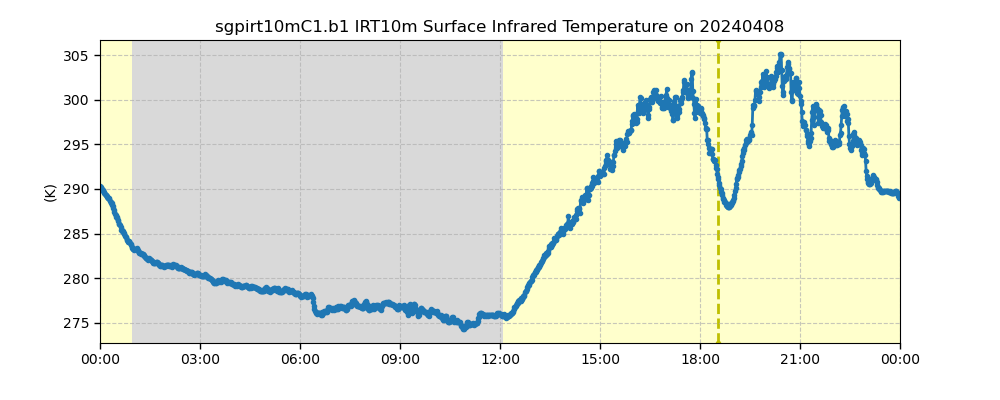ARM now has measurements from 2017 and 2024 eclipses
In a span of less than seven years, the contiguous United States has gotten to witness two total solar eclipses. The Atmospheric Radiation Measurement (ARM) user facility has collected data from both.
The first of those eclipses took place August 21, 2017, with 89% coverage over ARM’s Southern Great Plains (SGP) Central Facility near Lamont, Oklahoma. The second happened April 8, 2024, with slightly more coverage (91%) over the site.
In Lamont, the 2024 eclipse started just before 12:30 p.m., peaked at 1:47 p.m., and ended at 3:05 p.m. Central Daylight Time for an overall viewing time of 2 hours, 35 minutes.


SGP data from the 2017 and 2024 eclipses are freely available from the ARM Data Center. Soon, the eclipse measurements will be part of a new ARM data epoch. ARM data epochs are periods of well-characterized, calibrated measurements focused on a particular atmospheric phenomenon.
More information about the 2017 SGP eclipse data is available in this ARM blog post.
The 2024 data are the subject of a new blog post by Adam Theisen, who manages the ARM-supported Atmospheric data community Toolkit (ACT). Scientists can use ACT to work with atmospheric time-series data of varying dimensions, including from an eclipse, as Theisen’s blog shows.
A Totally Awesome Experience
Some ARM staff watched the 2024 eclipse in the path of totality, which cut through Texas, Oklahoma, Arkansas, Missouri, Illinois, Kentucky, Indiana, Ohio, Pennsylvania, New York, Vermont, New Hampshire, and Maine. Parts of Mexico and Canada also viewed the eclipse in totality.
In the contiguous United States, your next chances to see a total solar eclipse are August 23, 2044, and August 12, 2045. If you thought Lamont was lucky before, it will be in the path of totality in 2045.
Much sooner than that, the next total solar eclipse will cross over the Arctic Ocean, Greenland, Iceland, Spain, and northeastern Portugal on August 12, 2026. It will appear as a partial eclipse at ARM’s Eastern North Atlantic observatory in the Azores and the North Slope of Alaska observatory in Utqiaġvik (formerly Barrow). Utqiaġvik will be in the path of totality for a total solar eclipse on March 30, 2033.
# # #ARM is a DOE Office of Science user facility operated by nine DOE national laboratories.

